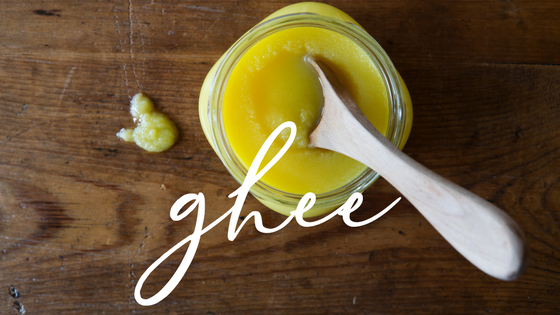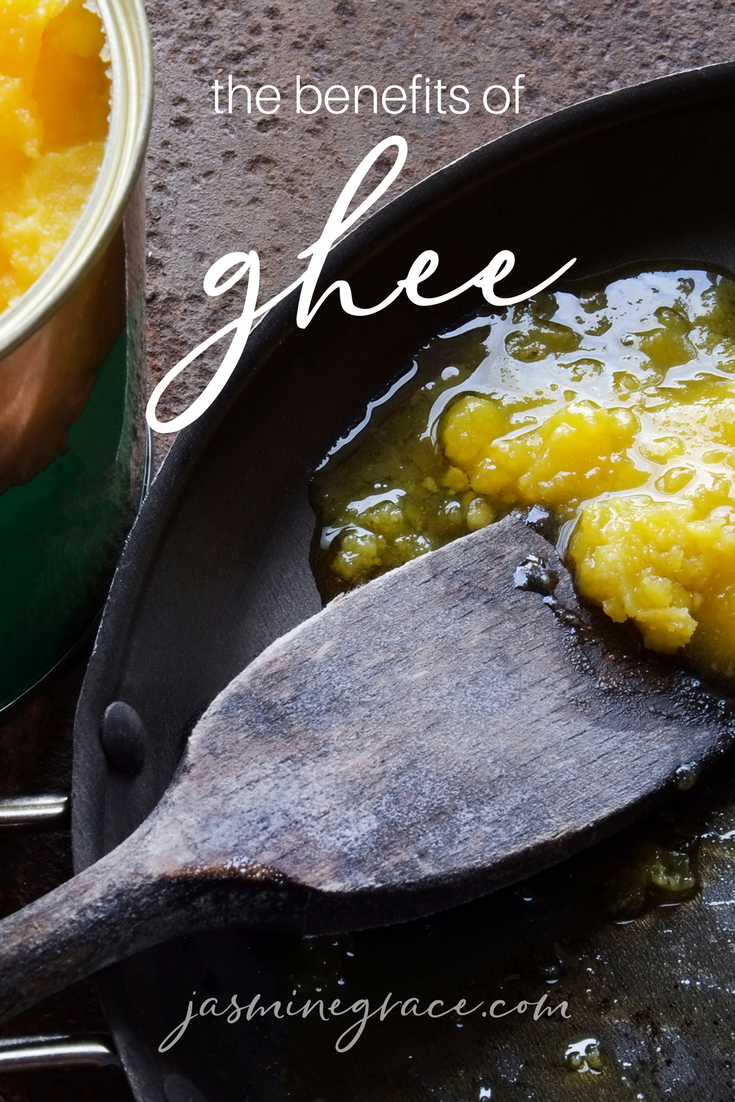HOW TO MAKE GHEE
The making of ghee can be a very beautiful and peaceful experience. As you make it, be mindful. Perhaps chant and infuse the process with the vibrations and frequency of love and healing.
Ingredients
Grass fed organic unsalted butter (salted butter can be used but it will foam more. I prefer unsalted.)
Method
Place butter in a clean, dry, medium-sized, heavy-bottom sauce pan.
Cook uncovered on medium heat until the butter melts. Throughout the entire ghee-making process, stir the butter occasionally. The butter will start to boil and foam, and you will hear a crackling sound. Once it reaches a boiling point, reduce the heat to low and simmer the butter until the foam forms on the top of it. You will need to part the foam to see the melted butter getting clearer.
Continue to simmer the butter until the crackling subsides. How long the process takes depends on how much butter you are clarifying.
You know ghee is ready when:
- Crackling stops, which is an indication that the moisture has been cooked away
- Under the foam film, the butter becomes a golden yellow liquid
- The milk solids separate and settle in the bottom of the pan, and are light brown in color
Be careful not to overcook the ghee and burn the milk solids. When burned, they turn a dark brown and/or the liquid ghee will be dark brown.
When the butter is clarified, remove the pan from the heat and let the ghee cool for about 30 minutes, then pour it through a fine strainer lined with 1 layer of muslin. Strain it multiple times, if necessary, to ensure that all the milk solids are strained out.
Pour the ghee into a clean, dry glass jar. Do not place a lid on the jar until the ghee has fully cooled. Ghee can be kept at room temperature or in the refrigerator for 2 months.
WHY GHEE?
It is high in nutrition: Ghee is rich in vitamins A, E, K2 and CLA. (Conjugated Linoleic Acid, an antioxidant with anti-viral properties if it is sourced from grass fed cows).
It has a high smoke point for cooking (482 °F). Unlike many other oils you can cook and fry with ghee, and it will not break down into free radicals
It has a great buttery taste but doesn’t prompt reactions to dairy allergies. Ghee is made from butter, but the milk solids and impurities have been removed so that most people who are lactose or casein intolerant have no issue with ghee.
It supports digestive health. Ghee is rich in butyric acid, a short-chain fatty acid that is beneficial to intestinal bacteria used to support intestinal wall health. Ghee can also stimulate the secretion of gastric acid. Consuming ghee therefore supports overall digestive health.
It can support the mind and spirit. The mind and body are directly connected. Modern science teaches us that there is a chemical nature to our emotions. Our negative emotions can release hormones and chemicals that are stored in fat. When used properly in a cleanse regimen, ghee can help cleanse (oleate) these tissues and pull the toxins from the body, positively effecting our emotional state. Ghee has a sattvic (clear and balanced) quality. Sattvic foods promote positivity, growth and expansion of consciousness.
USES OF GHEE
- For massage (Abhyanga): It is said that 60% of what we place on our skin is absorbed into the body, bypassing the digestive system. This allows ghee’s qualities to penetrate directly into the tissues.
- In cleanses (Panchakarma): a small amount of ghee, taken first thing in the morning to oleate the internal organs and “dissolve” the ama or toxic wastes in the tissues, allows toxins to be carried to the digestive tract for elimination.
- It is a carrier for herbal formulas: Ghee is used in Ayurveda as a carrier for medicinal herbal preparations so that they are transported to and absorbed by targeted areas of the body, deep in the tissues (dhatus).
- To support bowel movements: one or two teaspoons of ghee first thing in the morning, followed immediately with a cup of hot water, will promptly produce a bowel movement. It will also warm the body quickly. Two spoonfuls of ghee in warm (non-homogenized) milk before bedtime is soothing to the nerves, lubricates the intestines and facilitates a bowel movement in the morning.
- For cooking: Due to its high burn point, ghee is one of the best cooking oils.
- For oil-pulling: Excellent for swishing through teeth (1 tablespoon) to improve the health of the teeth and gums.
- For bathing: Mix ghee with several drops of an essential oil and place the mixture in your bathwater for a nurturing bath.
- For a topical treatment: Ghee is excellent to put on topically for both chemical or fire burns and scrapes on the body.
- In the eyes: A small drop of room temperature ghee can be used in the eyes for lubrication and eye fatigue. This is best done at night before bed as a small film of ghee will cover the eye until it is absorbed into the tissue.
10. Facial use: Ghee can be used as a make-up remover and moisturizer for the face.
11. Nasal use: Use a few drops in each nostril after Neti pot use, or if you get a nosebleed, or to alleviate nasal dryness.
12. To balance the Ayurvedic Doshas: Ghee can increase Kapha and decrease Vata and Pitta.


